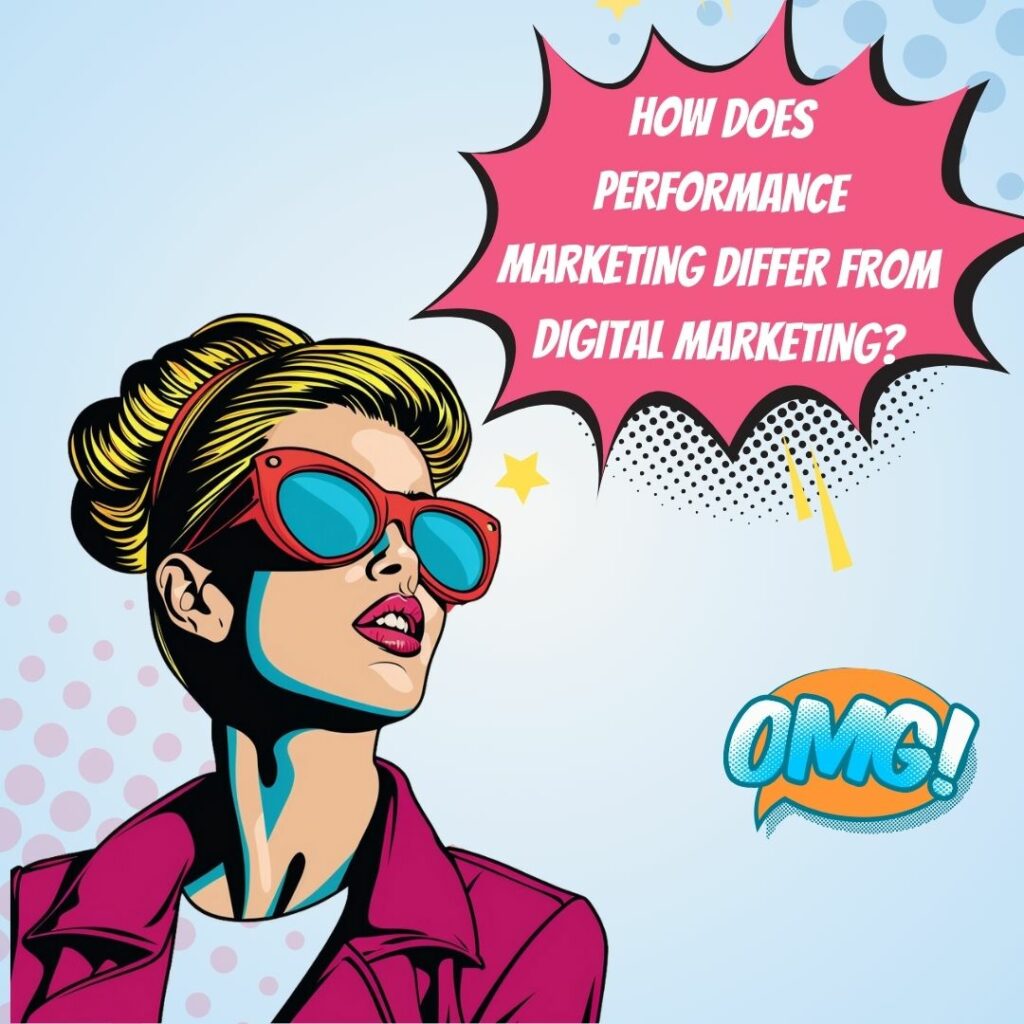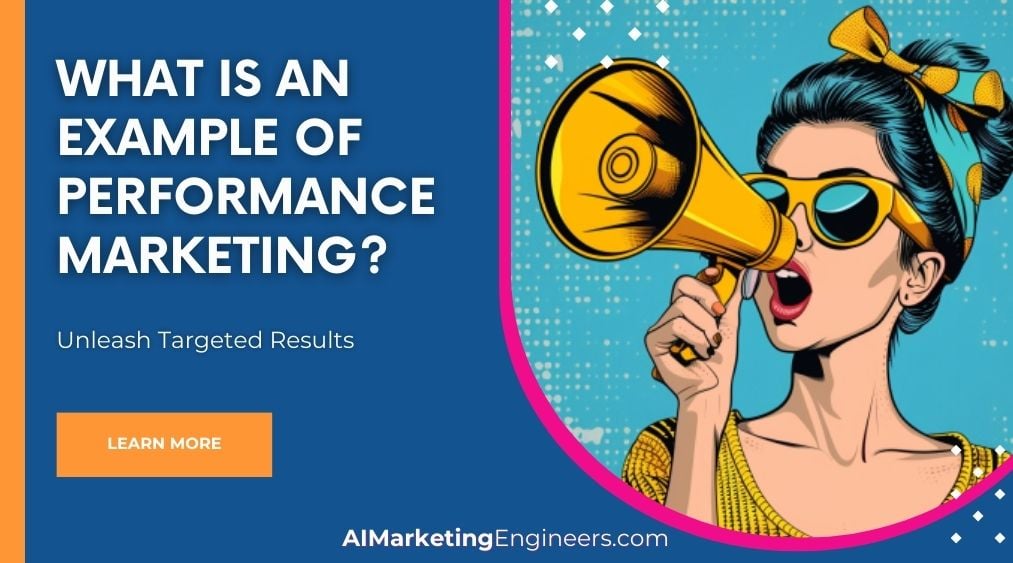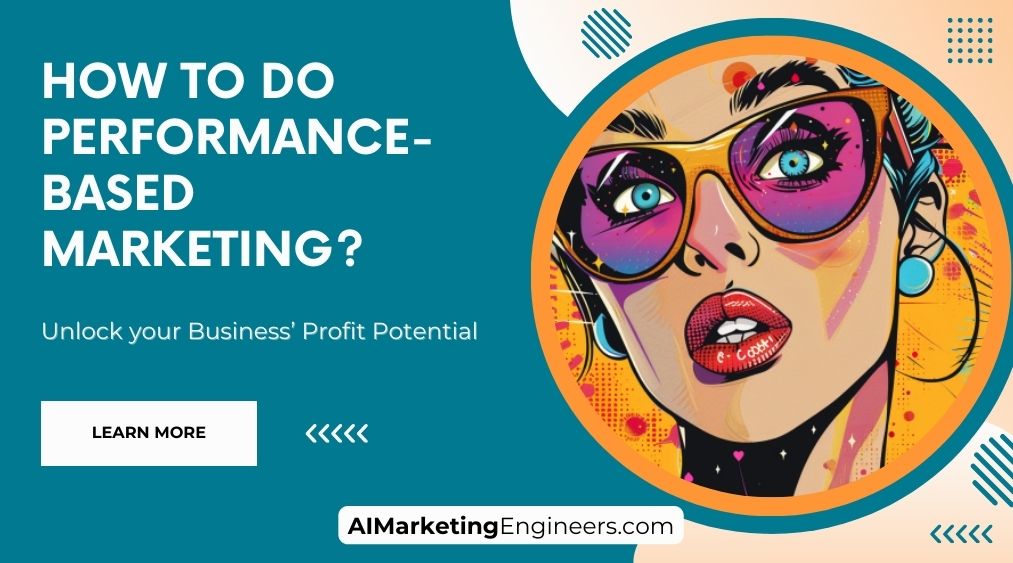Key Takeaways
✅ Definition and Scope: Distinguish between the direct, results-based world of performance marketing and the all-encompassing realm of digital marketing. Understanding their nuances can help pinpoint where to invest your marketing efforts for the best returns.
✅ Payment Models: Grasp the fundamental differences in how you’ll spend your budget – with performance marketing, you pay for the results you want, whereas digital marketing may require paying for the potential of results, through clicks or views.
✅ Measurement and Optimization: Discover the tools and strategies that reveal the impact of your marketing spends. Learn how to tweak campaigns for performance marketing’s immediate gains or adapt broader digital marketing ventures for long-term success.

Introduction
What’s the secret to truly making an impact with your online presence? Whether you’re a seasoned pro or just dipping your toes into the digital marketing universe, grasping the distinction between performance marketing and digital marketing can mean the difference between a campaign that soars and one that flops. Performance marketing throws you into the driver’s seat with its focus on concrete, measurable outcomes. On the flip side, digital marketing casts a wider net, aiming to heighten awareness and create meaningful connections.
Caught in the crossroads of choice? Fear not, because this guide is your beacon through the fog—offering an in-depth exploration into both realms. By understanding performance marketing’s precision in driving sales and leads, and digital marketing’s prowess in branding and engagement, you can craft strategies that not only look good on paper but also add real value to your bottom line.
Are you ready to uncover a world where every click could be a customer and every strategy is backed by data? Let’s propel your business into the limelight, explore modern trends, and solve the revenue puzzle one piece at a time. Embark on this eye-opening journey filled with actionable insights and groundbreaking information. Let’s get started!
Top Statistics
| Statistic | Insight |
|---|---|
| Performance Marketing Growth: Expected to reach $61.4 billion in 2022 with a CAGR of 12.3% from 2021 to 2026. (Source: eMarketer) | A clear indication that performance marketing is not just a buzzword – it’s a growing powerhouse in the advertising world. |
| Consumer Online Interaction: 90% of internet users 16-64 engage with brands online after seeing ads. (Source: GlobalWebIndex) | This stat tells us just how vital an eye-catching online presence is for brands looking to hook in potential customers. |
| Digital Marketing Expenditure: Poised to hit $526.17 billion by 2024, growing at a CAGR of 17.6%. (Source: Statista) | Dig into these numbers, and you’ll see some serious dough being banked on digital. Companies big and small are opening their wallets wide to stay digitally relevant. |
| Performance Marketing’s Digital Share: Expected to make up 62% of total digital ad spend in 2022, moving to 65% by 2026. (Source: eMarketer) | Performance isn’t just a piece of the pie; it’s fast becoming the whole darn pie! This shift highlights the value marketers see in paying for performance. |
| Social Media Discovery: 70% of consumers discover new products through social media. (Source: Statista) | That’s a lot of eyes ready to be dazzled by the next big thing. Brands are not just in a marketplace; they are in a vast social space, buzzing with potential buyers. |
What is Performance Marketing?
Performance marketing is like a no-nonsense friend who tells you straight up what they’re about: results. It’s a type of marketing where businesses only pay when specific actions are completed, like a sale, lead, or click. It’s all about tracking and measuring everything to the T. If you’ve ever clicked on a Google ad or signed up for something to get a discount, you’ve been part of performance marketing. The major players are cost-per-click (CPC), cost-per-acquisition (CPA), and cost-per-lead (CPL), and they come with a bunch of key metrics to keep an eye on, like conversion rates and click-throughs.
Understanding Digital Marketing
Now, if performance marketing is the straightforward friend, digital marketing is the social butterfly. It’s a broad term that covers all marketing efforts using an electronic device or the internet. Whether it’s through social media, emails that brighten your day, or blogs that answer the questions you were just Googling, digital marketing is all about connecting with people online. It’s about building a brand, weaving a story, and establishing a long-term relationship with your audience. The focus here is on organic growth, engagement, and spreading awareness.
Performance Marketing vs. Digital Marketing
You might be scratching your head, wondering, “What’s really different between performance marketing and digital marketing?” It’s like comparing a sprint to a marathon. Performance marketing sprints towards specific, measurable goals, usually tied directly to sales or leads. Digital marketing, however, runs the marathon, working towards broader objectives like brand awareness and customer engagement. It’s not all cold, hard numbers here; sometimes the impact is felt in the long game, beyond what immediate data can show.
Advantages and Disadvantages of Performance Marketing
Performance marketing can feel a bit like a treasure hunt – you invest directly in what gets you results. It’s cost-effective and offers clear cut, measurable data to track your return on investment (ROI). But there’s a catch. The thrill of the treasure hunt can lead to a focus on short-term gains rather than long-term strategy, and there’s always the risk of falling for deceptive tactics or fraud that skew your precious data.
Advantages and Disadvantages of Digital Marketing
Digital marketing lets you cast a wide net. It’s about creating a brand presence that people trust and want to engage with. The advantages are clear: potential for a broad audience reach and deeper customer relationships. Yet, the bigger the net, the harder it is to track every single fish. ROI can be harder to measure, and costs can rocket sky-high if you’re not careful.
Combining Performance Marketing and Digital Marketing
Imagine if you could have the best of both worlds – the precision of performance marketing combined with the brand-building prowess of digital marketing. Bringing them together can create a robust, holistic marketing approach that caters to immediate business needs while also sowing seeds for future growth. It’s about being strategic and knowing when to prioritize which approach based on your business goals.
The marketing world keeps evolving, but one truth remains: no matter which approach you lean towards, the secret sauce is understanding your audience. After all, what’s marketing without people to tell your story to?
AI Marketing Engineers Recommendation
Recommendation 1: Embrace Performance Marketing for Measurable ROI: Lean into performance marketing to get real numbers on how your campaigns perform. It means looking at cost-per-click (CPC), cost-per-acquisition (CPA), and return on ad spend (ROAS). Businesses, can you imagine knowing exactly how each dollar performs? It’s like switching from a regular phone to a smart one that tells you what’s eating up your battery—except it’s your budget we’re talking about.
Recommendation 2: Merge Digital Marketing Strategies with Performance Data: It’s not just about putting ads out there and crossing your fingers. Blend the creativity of digital marketing—think social media, content, email—with the precision of performance data. How are people reacting? What’s resonating? Use this to steer your ship. This approach keeps your tactics fresh and up-to-date with what’s striking a chord with your audience right now. Are you ready to turn those thumbs-ups and heart reacts into conversions?
Recommendation 3: Utilize Tools for Real-Time Data Analysis: Get your hands on tools like Google Analytics, SEMrush, or HubSpot for live tracking. Tap into the power of immediate insights to optimize campaigns on the fly. Are you reaching the right people? Are the messages hitting the mark? With these tools, you’re not just launching campaigns, you’re piloting them to success, adjusting your course with every data point. How thrilling is that?
Relevant Links
Maximize Your Affiliate Marketing Strategies in 2024
Unlock the Secrets to Affiliate Marketing Riches and Skyrocket Your Income!
Elevate Your Content Game with ChatGPT
Revolutionize Your Content Strategy with ChatGPT – The Creative Powerhouse!
AI-Powered Digital Marketing Trends
Stay Ahead of the Curve: Top Digital Marketing Trends Dominating 2024!
Supercharge Your Google Ads with AI Magic
Transform Your Google Ads into Conversion Machines with Groundbreaking AI Technology!
Unlocking the Power of AI in E-commerce
Revolutionize Your Online Store with Next-Gen AI Marketing – Boost Sales Instantly!
Conclusion
Performance marketing is like having a trusty measuring tape in your toolkit, allowing you to see precisely how high you’re jumping with every campaign. It focuses on concrete numbers and tangible outcomes. You shell out cash only when you see results, whether that’s a click, a lead, or a sale. It’s straightforward, almost like paying for a clear high-five each time your customer passes the finish line.
On the flip side, digital marketing is the big picture; it’s your vision board. It’s creating an online presence that feels like a warm welcome mat on the internet. You’re building relationships, sparking conversations, and nurturing a brand personality that sticks in people’s minds even when they’re offline.
The puzzle, though, is figuring out how these pieces fit together for your unique story. Will you lean more on performance marketing, with its Cost-effectiveness and in-your-face results? Or will you invest in the broad appeal of digital marketing, embracing its capacity for brand awareness and long-term customer bonds?
So, what’s your next move going to be? How will your business adapt to the evolving digital landscape where performance markers and digital dreams collide? Keep these insights in your back pocket as you sketch out your roadmap to success in the digital age. After all, isn’t it about finding the right balance that resonates with your brand’s voice and your audience’s needs?
FAQs
Question 1: What is performance marketing?
Answer: Performance marketing is a way of advertising where you only pay when specific things happen, like when someone clicks your ad, signs up for your newsletter, or buys something.
Question 2: What is digital marketing?
Answer: Digital marketing is all about using the internet and other digital tools to get the word out about what you’re selling or doing. It can be anything from posting on social media to sending emails or making your website easier to find on Google.
Question 3: What is the difference between performance marketing and digital marketing?
Answer: Think of performance marketing as the sharpshooter in your marketing strategy. It zeros in on clear targets and doesn’t cost you a dime unless it hits the mark. Digital marketing is the bigger picture—it’s all the methods you use online to talk to your audience, and it includes performance marketing.
Question 4: How does performance marketing differ from traditional marketing?
Answer: Traditional marketing is like casting a wide net and hoping for the best—you pay upfront and cross your fingers. Performance marketing is more like fishing with a spear—you aim, you throw, and you pay only if you catch something.
Question 5: What types of performance marketing channels are available?
Answer: There are quite a few ways to go about performance marketing. You can pay for clicks on your ads (that’s PPC), work with affiliates who promote your stuff, send out marketing emails, or use social media ads.
Question 6: How can performance marketing be used in conjunction with digital marketing?
Answer: You can mix performance marketing into your overall digital marketing recipe. It’s like adding a secret spice that helps you see which parts of your plan are working best and where you’re getting the most bang for your buck.
Question 7: What are the benefits of performance marketing for businesses?
Answer: Performance marketing is great because it lets businesses see right away what’s working and what’s not. It helps you spend your marketing dollars wisely, get more people to take action, and generally gives you more control over your marketing success.
Question 8: What are the key metrics to track in performance marketing?
Answer: You’ll want to keep your eyes on some key numbers, like how many people are clicking your ads, how many of them are doing what you want them to do, how much it costs you each time someone takes action, how much money you’re making back, and how valuable customers are over time.
Question 9: How can I get started with performance marketing?
Answer: Getting started is all about picking the right channel that fits what you want to achieve, crafting a smart plan, setting up ways to track everything, and then making tweaks along the way as you learn from the data you gather.
Question 10: What are some advanced performance marketing strategies?
Answer: When you want to take things to the next level, you can start looking at targeting people who have already checked out your site, finding new audiences that look like your best customers, automating your ad buys, and using some of the super cool AI tools out there to make your campaigns even smarter.
Academic References
- Yovanno, D. (2010). Performance marketing: A new paradigm for online advertising. Journal of Digital & Social Media Marketing, 1(1), 5-11. David Yovanno dives into the heart of performance marketing, shining a light on its data-driven core. It’s all about following the money, or the conversions and sales, rather than just the clicks and impressions. By tracking and tweaking campaigns, this article shows the hustle for a better bang for your buck.
- Kumar, V., & Shah, A. (2008). Digital marketing: An overview. Marketing Management, 17(3), 4-6. Ever wonder how digital marketing became a big deal? Kumar and Shah take you through the whirlwind of technology that helps businesses reach out and charm their customers. They talk about everything from popping up in searches to creating buzz on social media, and even the emails that pile up in your inbox.
- Chakraborty, A. S., Chaudhuri, A. S., & Khaled, S. A. M. (2017). The rise of performance marketing: A new era in online advertising. Journal of Interactive Marketing, 39, 1-13. In this intriguing piece, Chakraborty and friends look at performance marketing popping up to tackle the head-scratchers in digital marketing. You know, the creepy ad frauds and worries about brand safety. They walk through how performance-based goodies like cost-per-acquisition let advertisers and publishers play nice together.
- Smith, S., & Taylor, D. (2013). Digital marketing strategy: An integrated approach. Journal of Marketing Management, 29(3-4), 230-255. Meet the brain-teasers in marketing – how do you mix the old-school with the shiny new digital stuff? Smith and Taylor aren’t afraid of this challenge. They’re all about walking in the customer’s shoes and letting data do the heavy lifting to give your digital campaigns a leg up.
- Bhatia, A., & Sharma, A. (2019). The impact of performance marketing on digital advertising. International Journal of Marketing Studies, 11(3), 114-123. Bhatia and Sharma beef up the case for performance marketing. They’re out to prove that it’s not just about spending less money – it’s about making it stir a real buzz and getting more bang for your buck than the usual digital marketing gig. Talk about making every penny count!













